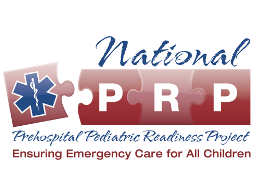New pediatric checklist and toolkit available for EMS agencies
- Published December 9, 2021

Pediatric readiness resources available to EMS agencies
For immediate release
Contact: pprp@emscimprovement.center
AUSTIN, TEXAS, Dec. 9, 2021—Nearly 50% of EMS agencies see less than one pediatric patient a month (National EMSC Data Analysis Center, “EMS for Children Survey,” July 2021). Not only are pediatric calls rare, but they also require specialized expertise, infrastructure, and resources. As a result, caring for pediatric patients often provokes discomfort and anxiety among EMS personnel.
In order to help EMS agencies improve their readiness to care for children, the National Prehospital Pediatric Readiness Project—an initiative of the federally funded Emergency Medical Services for Children Program—has launched two foundational resources: a pediatric checklist and corresponding toolkit for EMS agencies.
“In 2019, anticipating the release of the 2020 joint policy statement, we established a multidisciplinary steering committee with representatives from various national organizations, all with an interest in improving prehospital care for children,” says Kathy Brown, MD, National Prehospital Pediatric Readiness Co-Lead. “This group has been meeting for the past two years to create, pilot, and refine a readiness checklist and an improvement toolkit, now ready for use by any EMS agency interested in assessing their pediatric readiness.”
The National Prehospital Pediatric Readiness Project is supported by 27 national organizations, federal partners, EMS for Children Program grantees, and subject matter experts. A list of all supporting partners can be found here.
The checklist and toolkit will help provide the basis for a national prehospital assessment, which is expected to launch in 2024. The checklist is based on a 2020 joint policy statement and corresponding American Academy of Pediatrics technical report, and covers seven focus areas:
- Education and competencies for providers
- Equipment and supplies
- Patient and medication safety
- Patient- and family-centered care in EMS
- Policies, procedures, and protocols (to include medical oversight)
- Quality improvement/performance improvement
- Interaction with systems of care
The corresponding toolkit includes more than 80 resources that were selected and vetted by a multidisciplinary team of stakeholders. The resources align with the checklist and the joint policy statement.
“The checklist that the National Prehospital Pediatric Readiness Steering Committee developed takes the essential recommendations from the Pediatric Readiness in Emergency Medical Services Systems policy statement and turns them into tangible guidance that EMS systems can use,” says Manish I. Shah, MD, MS, co-author of the policy statement. “It helps agencies figure out how ready they are to care for children and set goals to build upon what they are already doing. The comprehensive toolkit also provides resources that agencies can use to implement their own readiness strategies.”
The National Prehospital Pediatric Readiness Project mirrors the parallel National Pediatric Readiness Project, which focuses on pediatric readiness in emergency departments.
Visit the project webpage to learn more.
About the EMSC Innovation and Improvement Center
Formed in 2016, the Emergency Medical Services for Children Innovation and Improvement Center (EIIC) leverages quality improvement science, the experiential knowledge of its co-lead organizations—The University of Texas at Austin Dell Medical School and University Hospitals Rainbow Babies and Children's as well as partners at Yale University, Baylor College of Medicine and The Lundquist Institute—and the expertise of multiple professional societies and federal organizations to improve health care outcomes for children in emergency settings. Learn more at: https://emscimprovement.center.
The Emergency Medical Services for Children Innovation and Improvement Center is supported by the Health Resources and Services Administration (HRSA) of the U.S. Department of Health and Human Services (HHS) as part of an award (U07MC37471) totaling $3M with 0 percent financed with non-governmental sources. The contents are those of the author(s) and do not necessarily represent the official views of, nor an endorsement, by HRSA, HHS, or the U.S. Government. For more information, please visit HRSA.gov.
###